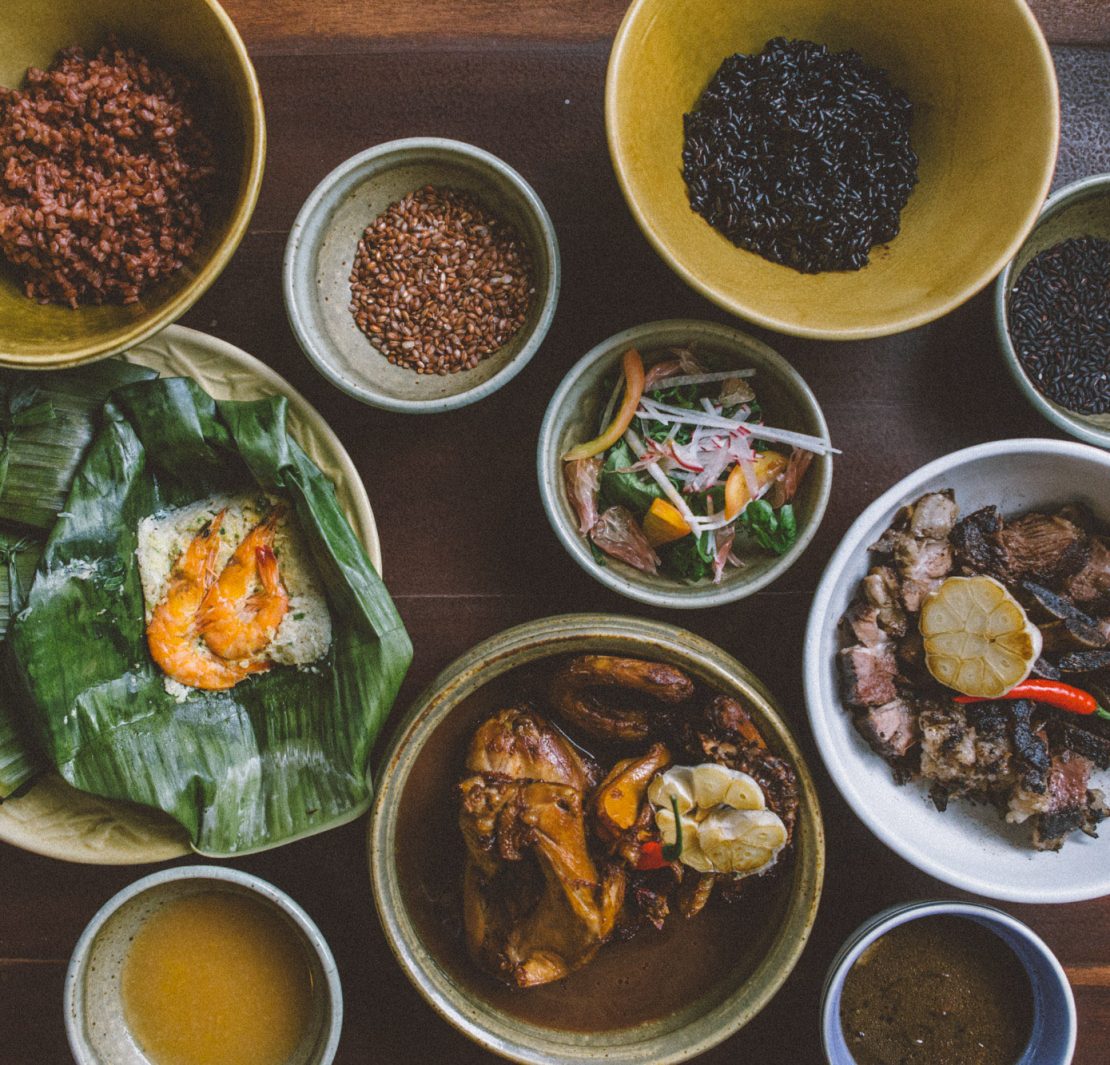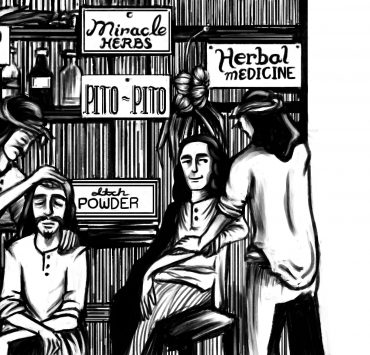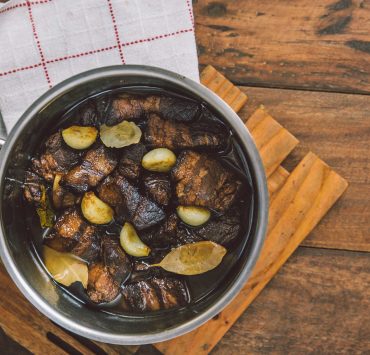“One of the goals I have at Purple Yam Malate is to be a lab and a training ground for future chefs who look at our ingredients and our cuisine as a very basic requirement in order to be a successful culinary professional,” says Amy Besa.
The restaurant opened in July after chef Romy Dorotan, Besa’s husband, spent two months setting up the system and training their impressively young kitchen staff. “They were all assembled because there was one criterion: you have to be passionate about Filipino food,” Besa says. “They’re all under 25. New graduates, but you know, they’ve stepped up to the plate and I am very, very happy and very blessed. I feel very lucky that I have a team like this.”
Purple Yam Malate is the Philippine branch of Dorotan and Besa’s popular Brooklyn restaurant of the same name. “Of course, the challenge is to run two restaurants because our restaurant in New York is still going.” she says. “That’s a question people ask, and we say that we’ll answer that when we cross the bridge when we get to it.”
The restaurant’s bigger goal, however, is to promote regional recipes, local products such as salts and vinegars, as well as heirloom plants and grains and meat from heritage breeds. This has resulted in a menu that is as delicious as it is colorful. At Purple Yam Malate, every dish, every condiment tells a story of the archipelago, and it is exactly these stories, told through taste, temperature, and heart, that Besa and Dorotan are intent on preserving.
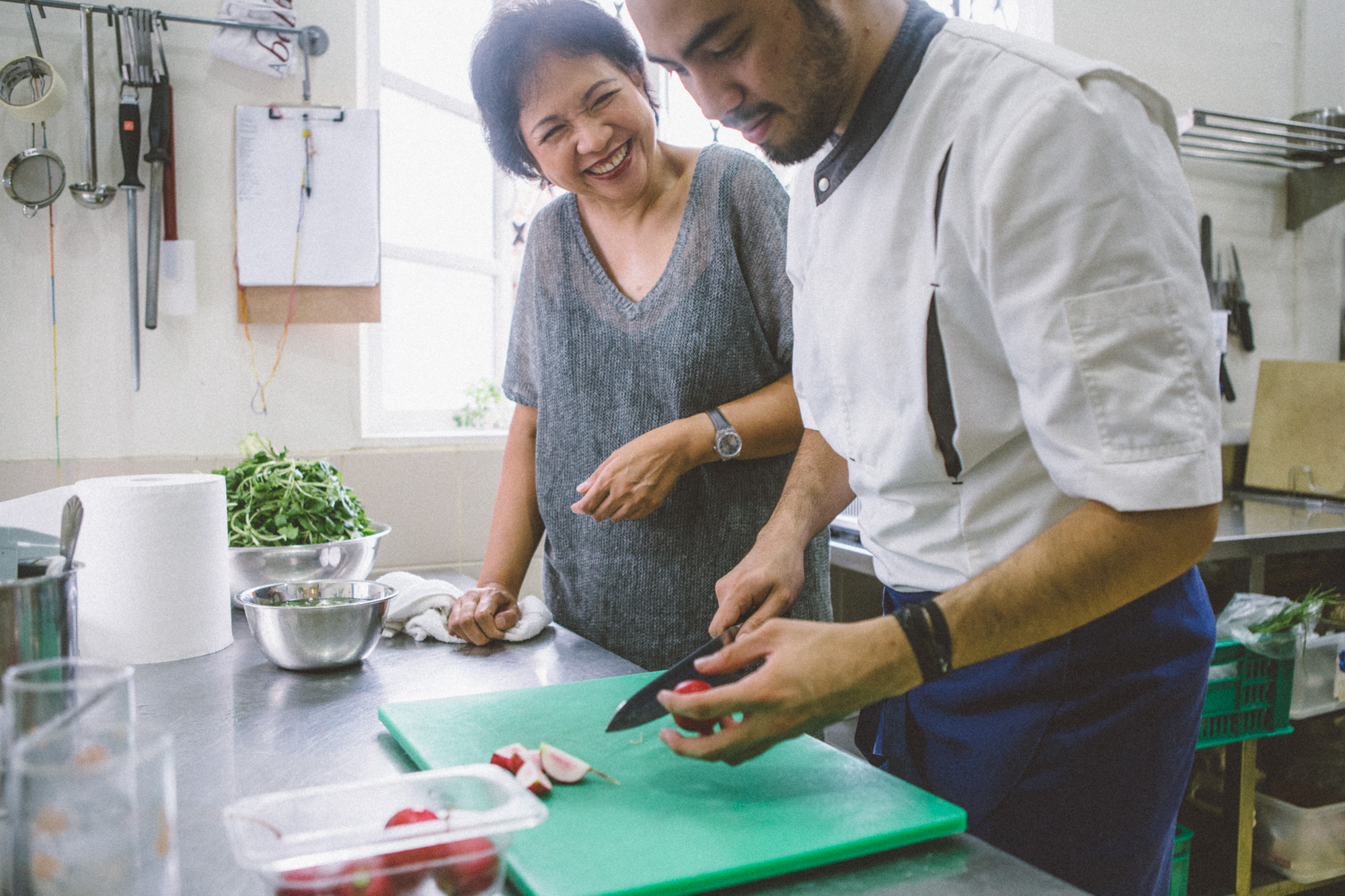
Why did you decide to open Purple Yam Malate?
We are near retirement age and I feel life is too short to waste. I know that in the next stage of my life, I will find my happiness in my home country because this is my people, my country, my culture; this is where I am at home, and I know I can do a lot of things here. As I’ve said, my mission is to make Filipinos aware of how beautiful our country is, how delicious our food is. Don’t underestimate it. Don’t under-appreciate it.
We have one of the most diverse ecosystems in the world, which means we can grow anything 12 months a year. There are all sorts of herbs and plants you can use for salads; you don’t have to eat [just] lettuce. When we serve salads here, we never use lettuce. I’m making that statement because there was a time that whenever I would visit an organic farm here, all they grew was lettuce. It became such an adverse reaction for me to see it. Why aren’t people growing alugbati? Saluyot? Sayote tops?
Whenever people mention Purple Yam, especially in the United States, the first thing that usually comes to mind is adobo, and how no two families have the same recipe. Can you tell us what you think makes an adobo?
For me, the definition of adobo is “cooked in vinegar.” Tapos lalagyan mo ng garlic and all that, but the use of soy sauce is a later development. It’s a Chinese influence because the original adobo used just salt. There are a lot of people who look down on adobo with soy sauce. And the variations are, if you go down south, for example, they use a lot more coconut milk.
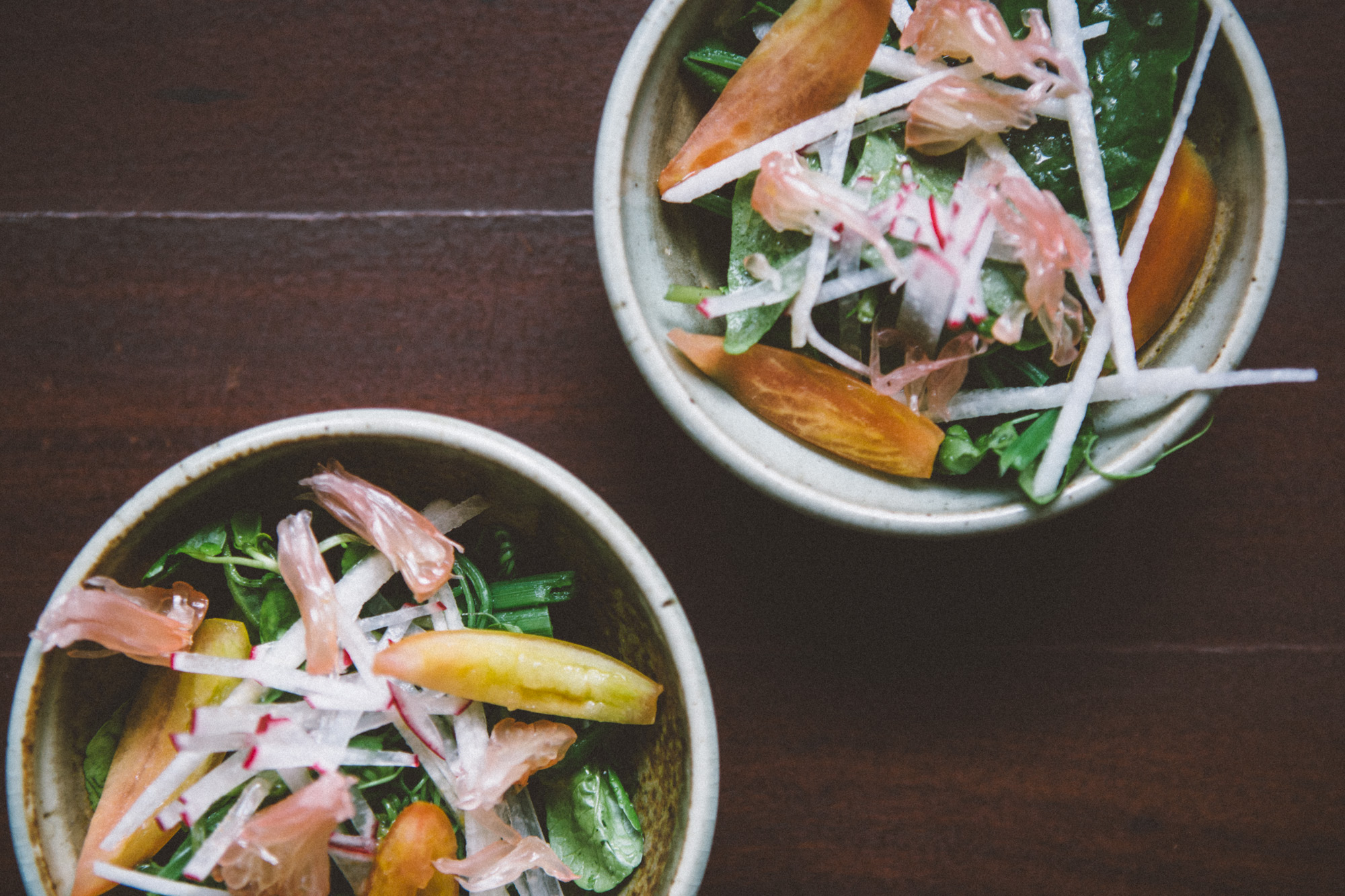
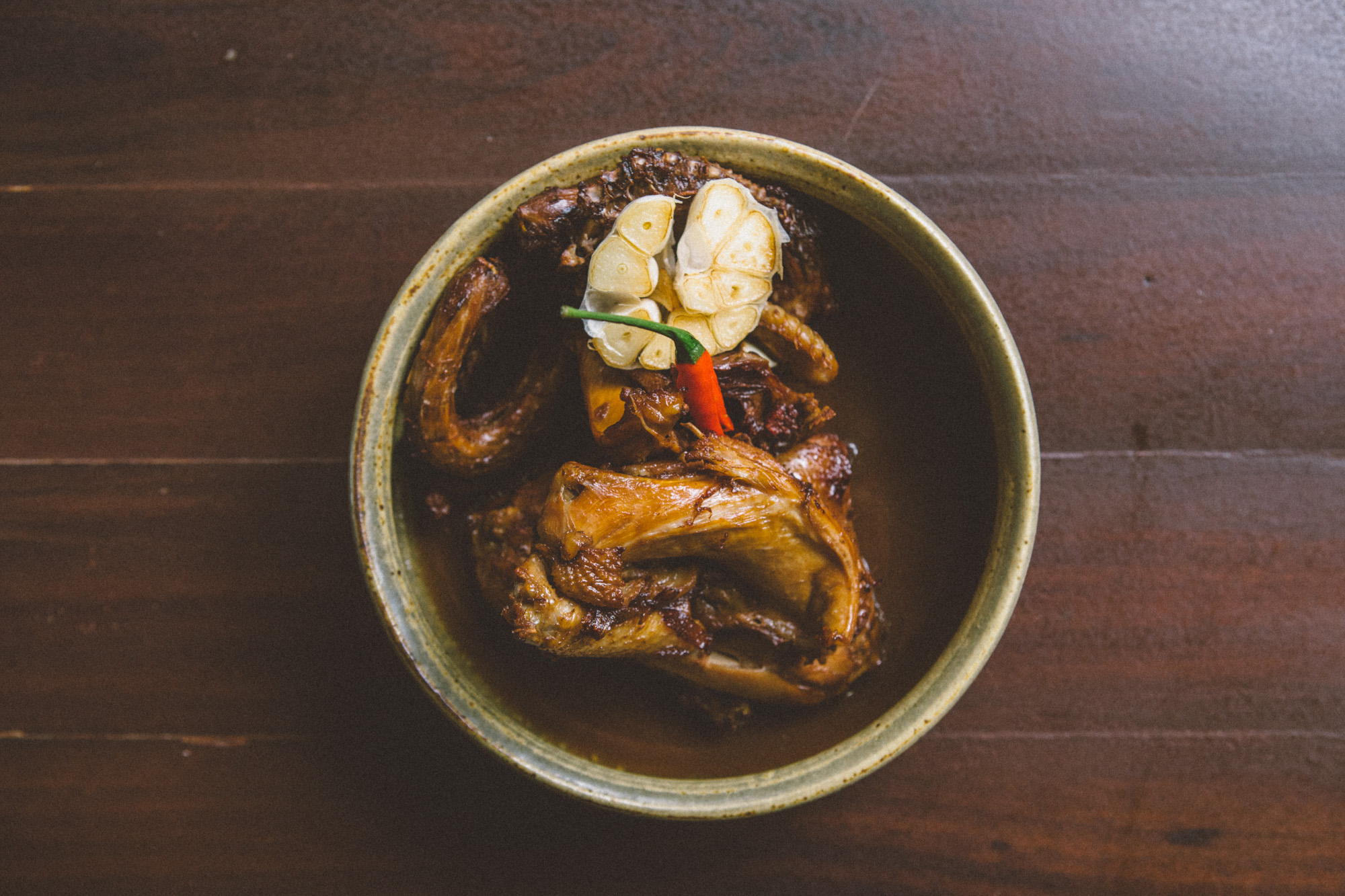
Why is it important to preserve local ingredients and recipes?
I’m big on preservation for two main reasons. One is health. It’s healthier to eat what’s locally grown, unlike processed food or fast food. I have nothing against mass-produced food because you need to mass produce food to feed masses of people, and if there are companies that produce that with integrity and [the intent of] making food healthy, then why not? But I think if we preserve what we have, then we are in a better environment because we will keep all our greens and our fruit trees, our nut trees—we won’t cut them down [to] build condos. We need greens both for our environment and our health, and I think that that is one way that Filipinos can earn livelihood.
You subscribe to the belief that the best way to preserve something is to make it marketable. Please tell us more about this.
In the United States, I have been involved in these movements to go back to organic, going back to heirloom. Recently, [it’s about] going [back] to heritage meats. The mantra was, you have to eat it to preserve it. I said, “That makes sense, because if you eat it, then you buy it. And if you buy it, whoever makes it or grows it will have income and it will have a commercial value. The markets will respond and suppliers will also respond. So if you don’t eat it, you don’t buy it, why would someone grow it?” I think this is what happened to a lot of properties that people had. Before, every household had trees in their backyard. Everybody had cacao, suha, or aratilis, all those fruits that no one really buys. Those are childhood fruits: camachile, macopa. Now, it’s hard to find them. All those fruits that I used to take for granted as a child, they’re all very hard to find now because they have no commercial value.
Please tell us about Ang Sariling Atin Culinary Heritage Institute, the organization you set up to promote local cuisine.
I have two goals. One is to do scientific-based research, and I’m partnering with universities such as Philippine Women’s University and some people from University of the Philippines Los Baños. The second aspect is the more practical application of the research, which would be to set up community kitchens. I am hoping that in many areas, people would set up community kitchens that will use all these local products, and the kitchens would be run with sanitary standards, with good skills. I was thinking of even partnering with culinary schools to send some of their best students to these areas, train people in life skills, sanitation, and all that. In turn, the locals could teach them about the local food and local ingredients. They can collaborate and serve really good local food from that area. I don’t know if I can accomplish that within my lifetime, but I’m hoping that if I talk about it enough, people will do it.
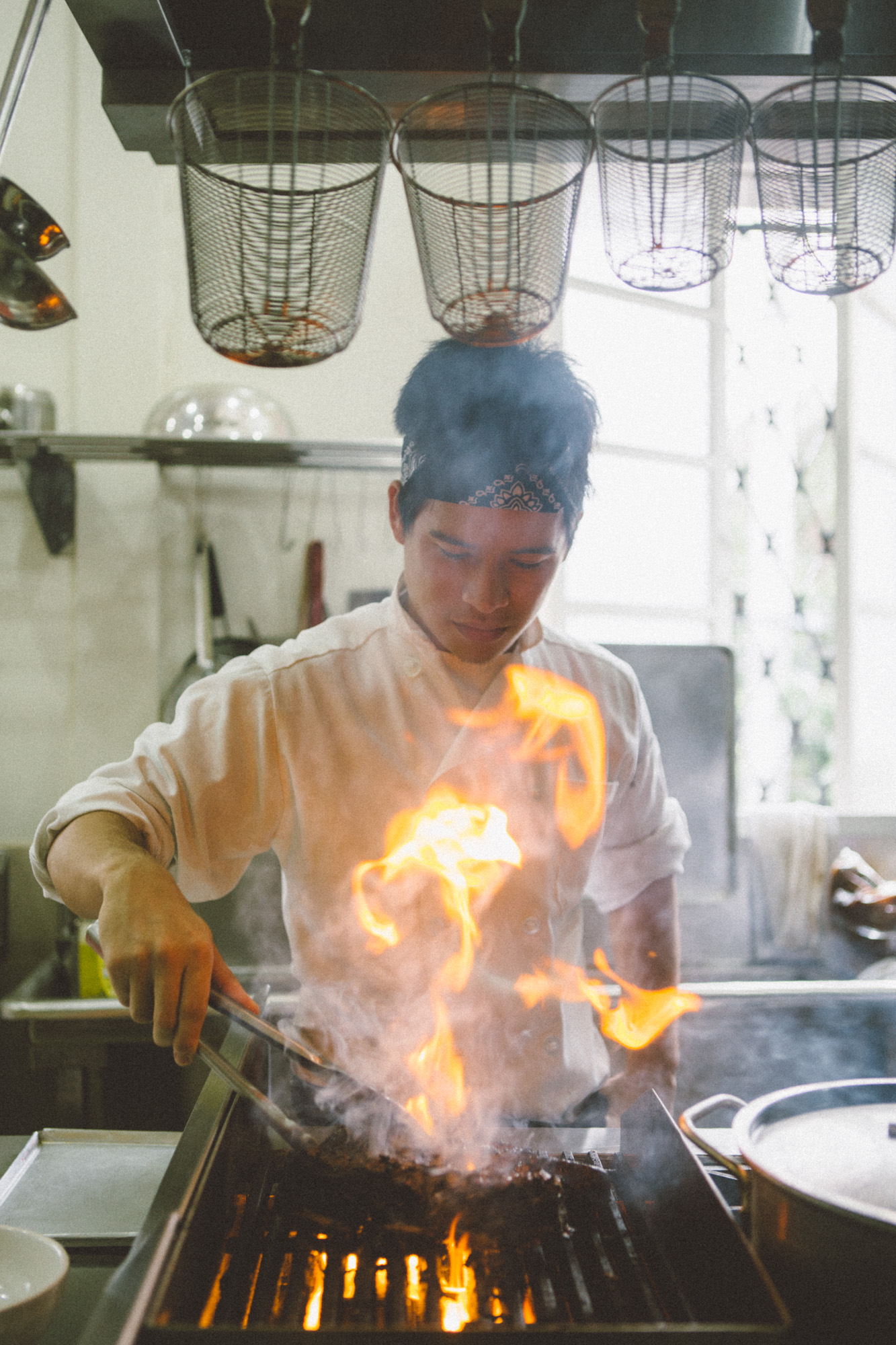 [blockquote author=”Amy Besa” pull=”center”] “Being a famous chef is not something that people should aspire for. It’s a useless goal. It would be much better if they turned out to be better cooks—skilled, sensible cooks who know their roots and know their own palate, so when they make their dishes or they cook their recipes, they’re not robots.” [/blockquote]
[blockquote author=”Amy Besa” pull=”center”] “Being a famous chef is not something that people should aspire for. It’s a useless goal. It would be much better if they turned out to be better cooks—skilled, sensible cooks who know their roots and know their own palate, so when they make their dishes or they cook their recipes, they’re not robots.” [/blockquote]
Why is placing value on local producers important, and how can we do this consistently?
People are more aware now, but there are two stages to this awareness: one is understanding what we have and appreciating it, and second is the willingness to pay for it. If we tend to cheapen everything—[for example] I want kakanin but I’m not willing to pay more than 10 pesos for it, then that kakanin maker will feel very undervalued and, at one point, will stop making good kakanin. If everything is done properly, I am willing to pay for it. But that would mean being more interactive and more invested in what you encounter in the food world, and I don’t know if everybody has the energy and the time to do that. If you do, though, then that would be great. More people can do that.
What do you wish Filipinos did more, culinary-wise?
I would encourage them to eat heirloom rice, because all you need is a small amount and you’re already full, as opposed to eating empty rice that’s all pure sugar and starch. Then you really tend to eat a lot.
How has Manila received Purple Yam’s culinary philosophy?
It’s great because a lot of people now want to buy the rice, the vinegars, the honeys, the salts. Now, we are in the process of trying to package them so we can sell them retail.
What advice would you give to young people who want to enter the culinary industry?
Whenever I am asked to speak at a culinary school, I always tell them [that] being a famous chef is not something that people should aspire for, that it’s a useless goal. It would be much better if they turned out to be better cooks—skilled, sensible cooks who know their roots and know their own palate, so when they make their dishes or they cook their recipes, they’re not robots. When you look at a recipe, as long as it’s processed through your sensibilities, your sense of aesthetics, and your palate, then it’s yours.
Writer: YVETTE TAN
PHOTOGRAPHY ARTU NEPOMUCENO

